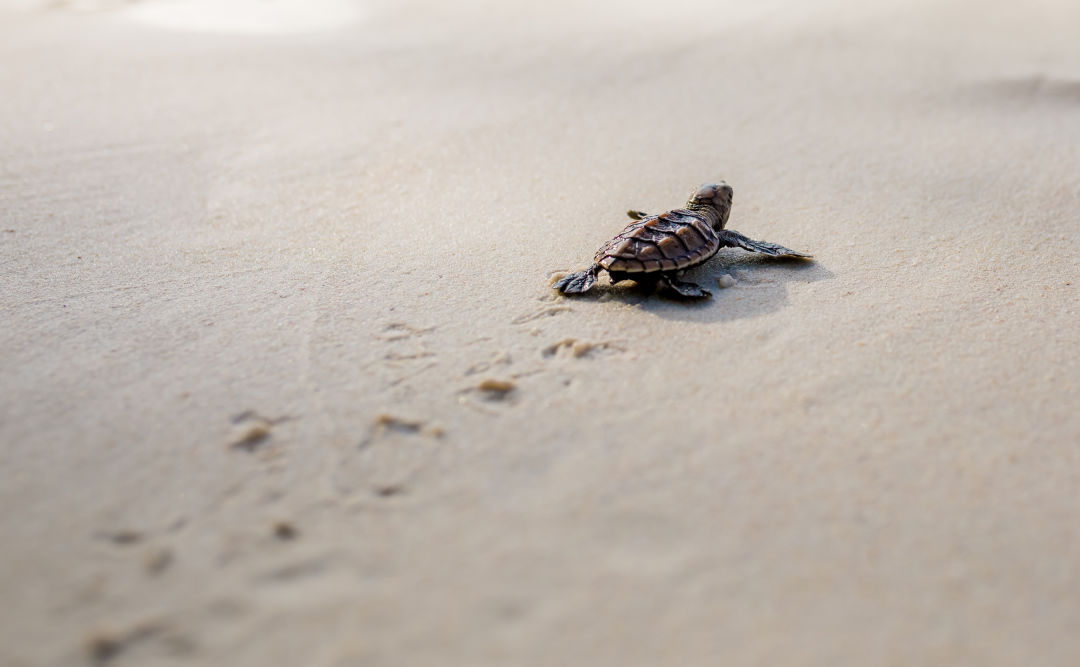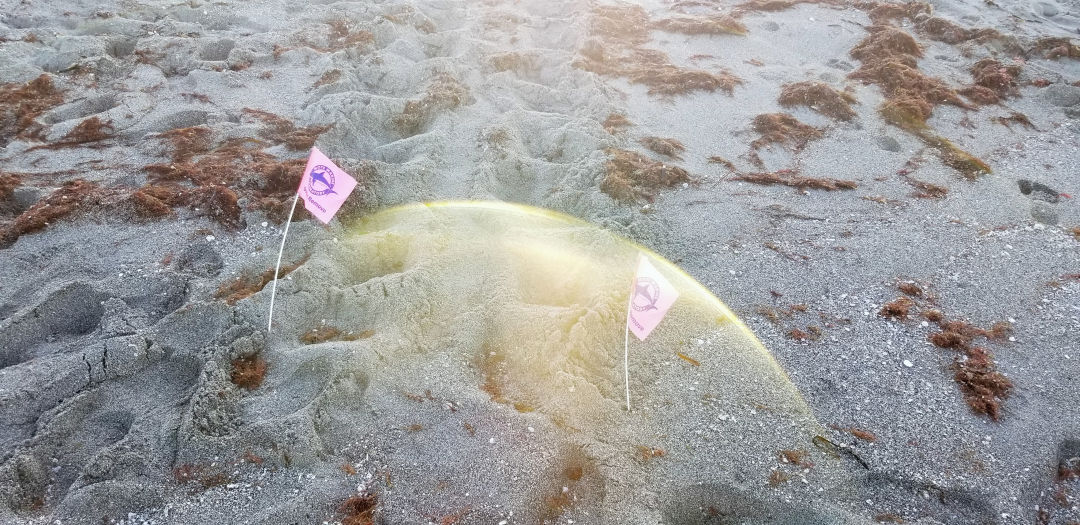Sea Turtles Arrive in Sarasota on Earth Day

A sea turtle hatchling makes its way to the ocean
Image: Shutterstock
Just in time for Earth Day, the first sea turtles have landed on the shores of Sarasota County. Mote Marine Laboratory & Aquarium’s Sea Turtle Conservation & Research Program (STCRP) documented the first nest of the season today, April 22, 2021. The nest is located in Venice, just north of the public Venice Beach area. Sea turtle nesting season officially runs from May 1-October 31.
Mote began monitoring Sarasota area beaches on April 15, and volunteers saw the telltale signs of a nest during their patrol early Thursday morning. A crawl was seen leading from the water up to a nest, and other clues in the sand were used to identify the nest itself and the species that created the nest.

The first sea turtle nest of the 2021 season was reported on April 22 on Venice Beach.
Image: Courtesy Photo
The nest was created by a loggerhead sea turtle, Sarasota's most abundant nester. Sarasota County is home to the densest loggerhead sea turtle nesting in the Gulf of Mexico. Green sea turtles nest on area beaches as well, often arriving later in the season, and although relatively low in number, STCRP has documented an increase in green sea turtle nests in Sarasota in the last 20 years.
How to protect sea turtles when you’re on land and on the water:
With the arrival of sea turtles, it’s important that members of the public enjoy the beaches while being mindful of nesting sea turtles. A list of tips and best practices are below. “The best way to remember how to help turtles is to think to yourself, ‘am I leaving the beach as natural and undisturbed as possible?’” says Melissa Bernhard, Mote senior biologist and conservation manager.
- Shield or turn off outdoor lights that are visible on the beach from May through October.
- Close drapes after dark and put beach furniture far back from the water.
- Fill in holes that may trap hatchlings on their way to the water.
- Do not approach nesting turtles or hatchlings, make noise, shine lights at turtles, or use flashlights, cell phone lights, or fishing lamps on the beach.
- Do not encourage a turtle to move while nesting, or pick up hatchlings that have emerged and are heading for the water.
- Do not use fireworks on the beach.
- Follow Coast Guard-approved safe boating guidelines and use vigilance to avoid striking sea turtles and other large marine life.
- Be sure to stow trash and line when boating. Marine debris that accidentally blows overboard or out of a truck can become ingested by or entangled around marine life.
- Wear polarized sunglasses to better see marine life in your path.
- If you encounter injured or sick sea turtles, do not attempt to assist the animal on your own. Call trained responders at Mote Marine Laboratory’s Stranding Investigations Program at (888) 345-2335 or the Florida Fish and Wildlife Conservation Commission (FWC) at (888) 404-FWCC. If you suspect that someone is tampering with a sea turtle nest, harassing a sea turtle or has possession of a sea turtle or any of its parts, please call FWC or your local law enforcement agency. If you find sea turtle hatchlings that are not on the beach or are headed away from the ocean, call FWC’s hotline at 888-404-FWCC (3922). Hatchlings heading towards the ocean should be left alone.



